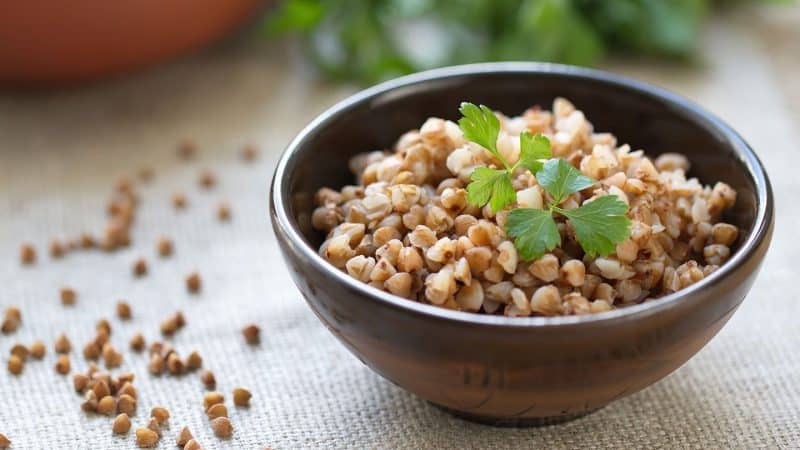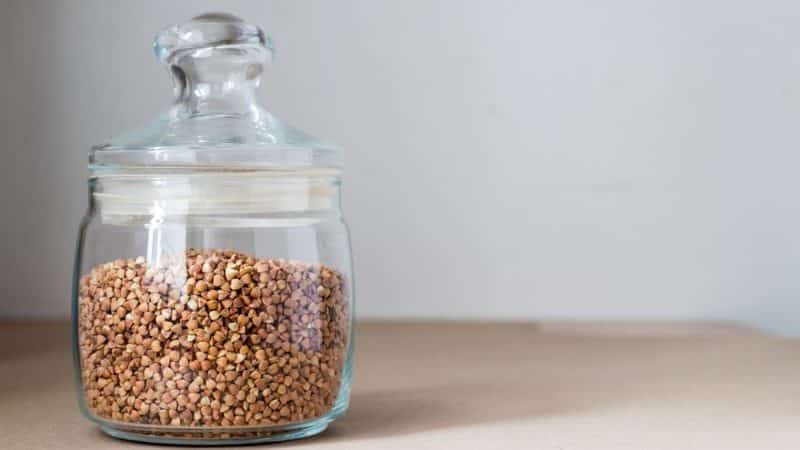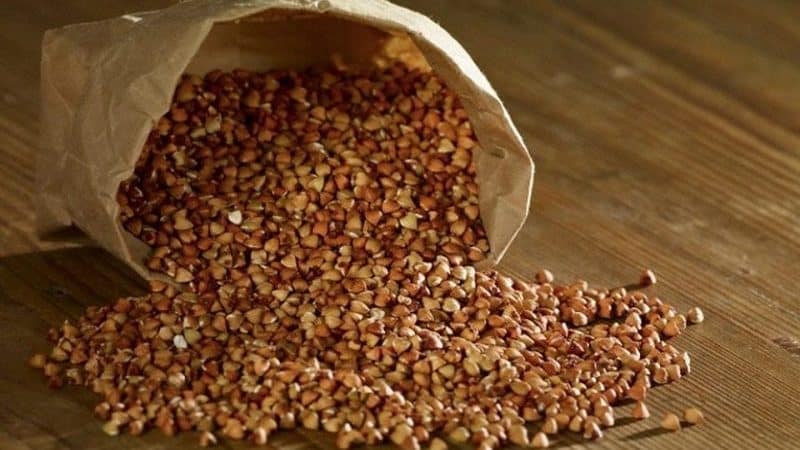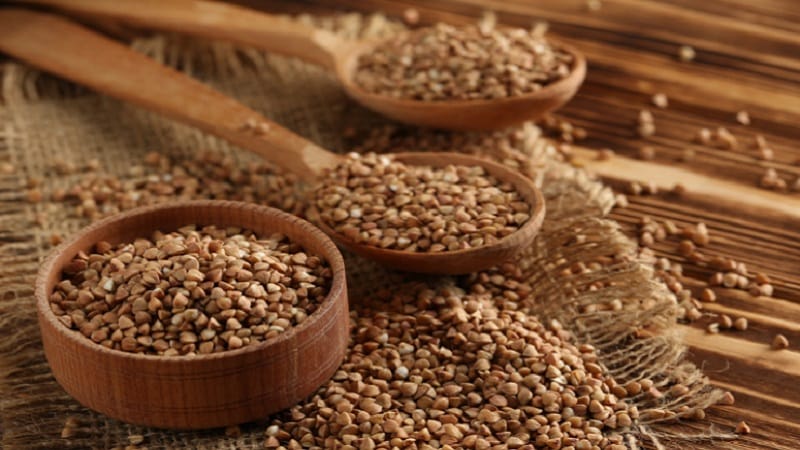What is the shelf life of buckwheat, raw and cooked?
Buckwheat is a healthy and nutritious product. It contains protein, fiber, vitamins, macro- and microelements. But the number of useful properties in it decreases with each subsequent day of storage. Therefore, the shelf life of buckwheat in dry and cooked form is important when using it.
Shelf life of cooked buckwheat
Cooked from buckwheat porridge or add it to other dishes. It is best to eat freshly prepared food. If the porridge is seasoned with oil, milk, vegetables or meat are added to it, it is recommended to eat it in the first hours, as these products reduce the shelf life.
After boiling in water without any additives, buckwheat can be stored in the refrigerator or prepared for future use by placing it in the freezer. We'll tell you how long to store porridge and what conditions are needed for this.

In a refrigerator
Buckwheat porridge can be stored in the refrigerator for no more than three days at a temperature of +4°C. It is better to transfer it into a container with a tight-fitting lid and take out the desired portion before use. The tightness of the container will prevent the porridge from absorbing foreign odors.
In the freezer
Boiled buckwheat Can be stored in the freezer compartment of the refrigerator for up to three weeks. The longer the porridge sits in the refrigerator, the less beneficial properties it will retain. It will only satisfy the feeling of hunger.Buckwheat is packaged in portions in containers or hermetically sealed bags, taken out as needed and heated.
At room temperature
After cooking, the porridge can remain on the table for no more than 4 hours at a temperature of 18 to 22°C. In the heat, pathogenic microorganisms quickly begin to multiply, and it becomes unfit for consumption.
Attention! If butter, milk or other ingredients are added to the porridge, this shortens the shelf life. The dish will spoil in the heat after 1.5-2 hours.
Optimal storage conditions
When storing boiled porridge for future use, follow these recommendations:
- cooked buckwheat can be stored for a long time only in the refrigerator or freezer;
- use containers with tight-fitting lids;
- The recommended storage temperature for boiled buckwheat is from +2 to +4°C;
- if you plan keep a week or more, it is better to freeze the porridge;
- in the refrigerator it must be isolated from foods with a strong odor (fish, citrus fruits, etc.), as it quickly absorbs odors.
Terms and conditions for storing dry buckwheat

The freshness periods of cooked porridge and dry product differ. Dry preserves beneficial properties longer.
Shelf life of buckwheat depends on its variety, quality, region, packaging. How long each type of cereal can be stored is indicated in GOST.
In a closed package
Prodel and kernels in closed packaging retain their basic properties unchanged for 14 and 15 months in the Far East, North Caucasus and Lower Volga region and 18-20 months in other regions of Russia, provided they are stored in accordance with GOST: in dry rooms with good ventilation, relative air humidity is about 70%, temperature not higher than +25°C.
Groats in a room with high humidity and poor ventilation roll into lumps, which contributes to the formation of mold and mildew.
Attention! The packaging date and expiration date should be stamped on the bag, not on a sticker label.
Opened or loose
Once the package is opened, buckwheat should be consumed within a few months. If the cereal is packaged in bags in a store, it will be difficult to find out the date the manufacturer’s packaging was opened. The factory packaging could have been opened 2-3 months ago and put into bags at any time.
After opening the factory packaging, buckwheat is stored until the following indicators:
- kernel – up to 4 months;
- done – up to 3 months;
- green buckwheat – no more than 2 months.
Places for storing buckwheat should be dry, cool and dark. Bright light negatively affects the quality of the product.
How to understand that a product has begun to deteriorate

Spoiled buckwheat will not do any good and may even cause harm. But how can you tell if your porridge or cereal has gone bad? Such conditions will be indicated by characteristic signs. If one or more signs are present, buckwheat in any form should be thrown away and such a product should not be consumed.
Suitability test
Boiled buckwheat spoils quickly in warm conditions. You can determine that the porridge is not suitable for consumption by the sour smell, mucus and mold that appears. Cereals also deteriorate if stored incorrectly or after their expiration date. Therefore, before purchasing and preparing it, you need to inspect it, paying attention to the whitish coating, smell and other changes. The quality of buckwheat is determined by studying a small amount of it.
The following indicators are important:
- color - the grains are covered with a whitish coating or mold;
- taste – buckwheat is bitter if you chew 1-2 grains;
- smell - mustiness and rancidity appear due to the breakdown of fats;
- the cereal falls off, forming lumps;
- Insects appear - bugs, worms, moths.
These signs indicate that the product is not suitable for food. It's better to throw it away.
What are the dangers of eating expired buckwheat?
Some people neglect the indicated expiration dates, believing that a slightly stale product will not cause much harm. However, buckwheat grains are capable of absorbing and accumulating odors, volatile and toxic compounds. The longer a product is stored, the higher the concentration of harmful substances in it.
Cereals that have expired will not benefit the body. It is deprived of essential vitamins and microelements. If it already contains harmful microorganisms and mold, porridge prepared from it will cause poisoning or gastrointestinal tract disorders. Therefore, it is better not to risk your health.
How to extend shelf life

You can extend the suitability of the product at home by slightly drying it in the oven. Then put the cooled cereal into a glass or plastic container with a closing lid. If you use a linen bag, the cereal will “breathe” in it, which will protect it from mold and musty smell.
If you put 1-2 cloves of garlic or bay leaves into a jar of buckwheat, this will help avoid damage by insects. A gauze or paper bag of salt will absorb moisture and the cereal will not become soggy.
Conclusion
The storage time of buckwheat depends on its quality and type, dry or boiled. If storage conditions are observed, the product will not lose its beneficial properties, retain its nutritional value and will be useful. Boiled buckwheat is a highly perishable product and should be eaten within the first four hours after cooking.If you want to preserve its beneficial properties as much as possible and extend its shelf life, store cooked buckwheat in its pure form without additives. It can be stored in the refrigerator for up to three days, in the freezer for up to three weeks.
Dry buckwheat can be stored for an average of two years in a closed package, and after opening - for several months. The exact expiration date is indicated on the packaging. If cereals or porridge begin to spoil, it is better not to eat it.